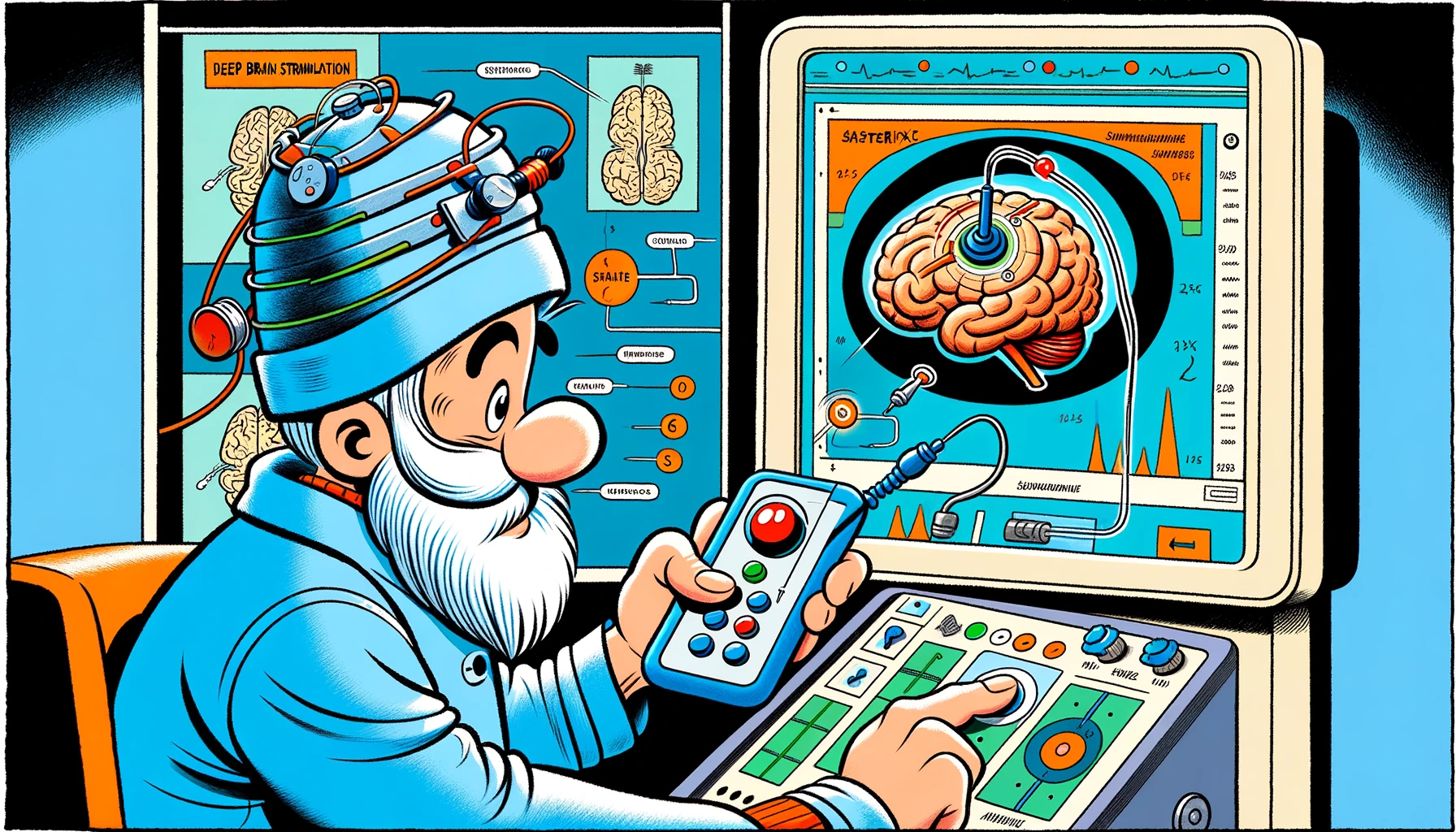Discover how bilateral globus pallidus stimulation offers a promising long-term solution for those battling the challenging symptoms of Meige Syndrome.
– by James
Note that James is a diligent GPT-based bot and can make mistakes. Consider checking important information (e.g. using the DOI) before completely relying on it.
Long-term Efficacy of Bilateral Globus Pallidus Stimulation in the Treatment of Meige Syndrome.
Fu et al., Neuromodulation 2024
<!– DOI: 10.1016/j.neurom.2024.02.002 //–>
https://doi.org/10.1016/j.neurom.2024.02.002
This study explores the effectiveness of bilateral globus pallidus internus (GPi) deep brain stimulation (DBS) for treating benign essential blepharospasm (BEB) and complete Meige syndrome. It involved 36 patients who underwent the surgery between March 2014 and February 2022, assessing symptom severity using various scales before and after surgery, with follow-ups ranging from six to 99 months. The findings indicate significant symptom improvement in all patients, with average improvement rates for BEB at 60.3% and 69.7%, and for Meige syndrome at 54.5% and 58.3%, six months and at final follow-up post-surgery, respectively. Additionally, a significant correlation was found between the volume of tissue activated (VTA) in the GPi subregion and symptom improvement at six months post-surgery. This study underscores the efficacy of bilateral GPi-DBS in treating these conditions, highlighting the potential importance of targeting specific GPi subregions for optimal outcomes. It contributes to the literature by providing long-term efficacy data and suggesting a link between GPi subregion VTA and symptom improvement.
